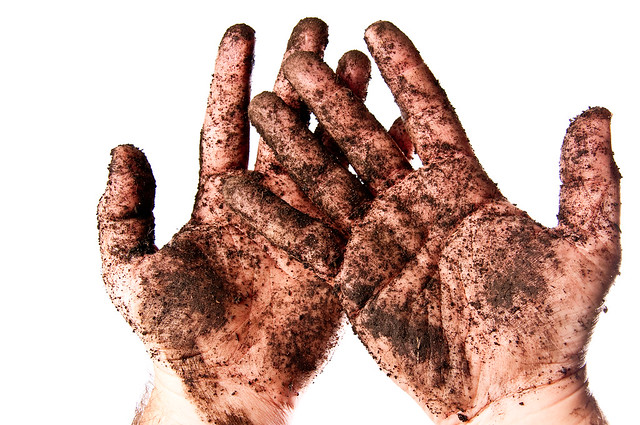 |
| Photo: eatcology.com |
Choosing a location
Observe your property at different times of day. Consider which areas receive the most sun, which are in shade for much of the day. Depending on where you live, if sunshine is a scarce commodity, you will want to expose plants to receive as much as possible. On the other hand, in desert regions, you will not want your plants to be in the area most likely to be parched by sun exposure. Also think protecting your garden from the paths where strong winds tend to blow through your property. Even a small property will have microclimates -- notice these and plant accordingly to give different plants either more sun or more shade according to their preference.
Selecting plants
Avoid disease-prone plants which require time-consuming chores such as spraying and pruning by the gardener. Select plants which will thrive in your area rather than those which will require extra labor on your part to protect them from the environment. As far as possible, select plants which serve multiple purposes, such as fruit trees which will put forth blossoms in one season, fruit to pick in another, and provide shade for when you want to sit and enjoy your garden's natural beauty. Native plants are also more likely to attract local pollinators such as bees, and to draw butterflies so that your garden contains even more natural beauty.
Making a home for your plants
Raised beds require less physical effort on the part of the gardener and also benefit plants, providing better air circulation, more protection from spring chills and improved usage of water. Raised beds also mean a small permaculture garden is an option even for apartment dwellers and others with little available space since you can rely on containers and vertical gardening principles.
Feeding your plants
One of the key concepts of permaculture organic gardening is to avoid waste. Having a garden gives you a means of re-using natural waste such as eggshells, apple cores, coffee grinds as well as yard waste which many people throw away. You can either purchase or make a compost bin to turn this organic material into gardening gold which can be used to help your plants grow.
Watering your plants
Modern gardeners who do not follow sustainability principles tend to draw heavily on piped-in water resources, often using hoses and sprinklers to make plants which require abundant water grow in a desert climate. Permaculture organic gardening tries to use natural water as much as possible, maximizing the use of groundwater and rainwater. Rain barrels allow you to collect rainfall and extend its use over longer periods of time.
Protecting plants from pests
Eschewing the use of chemicals does not have to mean a garden full of pests. You can use companion gardening principles, growing plants which deter pests near those which attract them. There is also a natural synergy between some plants which means planting them near each other increases your yield. Also, just as some herbs have a medicinal effect on human health, they also offer benefits to plants which grow near them.
For more information about companion planting, visithttp://www.appropedia.org/CCAT_companion_planting and http://www.gardeningknowhow.com
If you have space and live in an area where it is permissible to keep poultry, chickens can make a wonderful addition to a permaculture garden. If they are permitted free-range for most of the day, they will consume many pests. Chicken manure also contributes beneficial nitrogen to the soil of your garden.
Sources for this article include:
http://www.safecom.org.au/permaculture.htm
http://www.organicgardening.com
http://www.appropedia.org/Beginners_permaculture_garden
Learn more: www.naturalnews.com/035038_permaculture_gardening_how_to.html#ixzz1nHjfmYrW




